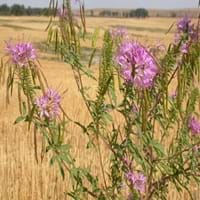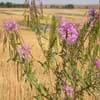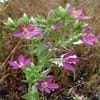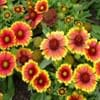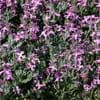Life Span
Annual
Perennial
Type
Herbs, Vegetable
Shrub
Origin
South America, Argentina, Brazil
Southeastern United States
Types
Skunk weed, Navajo spinach
Not available
Habitat
foothill woods, open Woodlands, Prairies, Roadsides
Bluffs, Coastal Regions, Stream side, Woods
USDA Hardiness Zone
3-10
5-9
Sunset Zone
1a, 1b, 2a, 2b, 3a, 3b, 4, 5, 6, 7, 8, 9, 10, 11, 12, 13, 14, 15, 16, 17, 18, 19, 20, 21, 22, 24
Not Available
Habit
Upright/Erect
Spreading
Flower Color
White
White, Pink
Flower Color Modifier
Bicolor
Bicolor
Leaf Color in Spring
Green
Green
Leaf Color in Summer
Green
Dark Green
Leaf Color in Fall
Green
Lemon yellow, Yellow green
Leaf Color in Winter
Light Green
Not Available
Leaf Shape
Small elliptic
Palmate
Plant Season
Summer
Spring, Summer, Fall
Sunlight
Full Sun
Full Sun, Partial Sun, Partial shade
Type of Soil
Sand
Clay, Loam, Sand
The pH of Soil
Acidic, Neutral
Acidic, Neutral, Alkaline
Soil Drainage
Well drained
Average
Bloom Time
Summer, Late Summer
Summer, Late Summer
Tolerances
Cold climate
Salt, Wind
Where to Plant?
Container, Ground
Ground, Pot
How to Plant?
Seedlings
Cuttings, Seedlings
Plant Maintenance
Low
Low
Watering Requirements
Medium, Requires regular watering, Requires watering in the growing season, Water occasionally
Keep the Soil well drained, Requires regular watering
In Summer
Lots of watering
Lots of watering
In Spring
Moderate
Moderate
In Winter
Average Water
Average Water
Soil pH
Neutral, Slightly Acidic
Acidic, Neutral, Alkaline
Soil Type
Sandy, Well drained
Clay, Loam, Sand
Soil Drainage Capacity
Sandy, Well drained
Average
Sun Exposure
Full Sun
Full Sun, Partial Sun, Partial shade
Pruning
Remove damaged leaves, Remove dead or diseased plant parts
Remove damaged leaves, Remove dead branches, Remove dead flowers, Remove dead leaves
Fertilizers
All-Purpose Liquid Fertilizer, fertilize in growing season
14-14-14 Fertilizer, Apply N-P-K, slow-release fertilizers
Pests and Diseases
Insects, Leaf spot
Edema, Powdery mildew, Verticillium Wilt
Plant Tolerance
Cold climate
Salt, Wind
Flower Petal Number
Single
Single
Fragrant Bark/Stem
Yes
No
Foliage Texture
Medium
Coarse
Foliage Sheen
Matte
Matte
Invasive
Sometimes
Sometimes
Attracts
Bees, Butterflies
Butterflies, Hummingbirds
Allergy
Not Available
Pollen
Aesthetic Uses
Landscape Designing
Cottage Garden, Showy Purposes
Beauty Benefits
Not Available
Not Available
Environmental Uses
Air purification, Food for insects, Shelter for wildlife
Air purification, Wildlife
Medicinal Uses
Fever
Antirheumatic, Colic, constipation, Piles
Part of Plant Used
Flowers, Leaves, Seeds
Seeds
Other Uses
Decoration Purposes, Making deodorants, Used as a dye, Used As Food, Used for its medicinal properties
Used for making soaps
Used As Indoor Plant
Yes
No
Used As Outdoor Plant
Yes
Yes
Garden Design
Edible, Herb
Feature Plant, Foundation, Screening, Wind Break
Botanical Name
CLEOME hassleriana 'Helen Campbell'
AESCULUS parviflora
Common Name
Cleome, Spider Flower
bottlebrush buckeye, dwarf horse chestnut
In Hindi
Cleome serrulata
Bottlebrush Buckeye
In German
Cleome serrulata
Buckeye Putzer
In French
Cleome serrulata
Bottlebrush Buckeye
In Spanish
serrulata cleome
bottlebrush Buckeye
In Greek
Cleome serrulata
bottlebrush Buckeye
In Portuguese
serrulata Cleome
Bottlebrush Buckeye
In Polish
cleome serrulata
Bottlebrush Buckeye
In Latin
Cleome serrulata
bottlebrush Buckeye
Phylum
Magnoliophyta
Magnoliophyta
Class
Magnoliopsida
Magnoliopsida
Order
Brassicales
Sapindales
Family
Cleomaceae
Hippocastanaceae
Clade
Angiosperms, Eudicots, Rosids
Angiosperms, Eudicots, Rosids
Tribe
Not Available
Not Available
Subfamily
Not Available
Hippocastanoideae
Number of Species
Not Available
Season and Care of Cleome serrulata and Bottlebrush Buckeye
Season and care of Cleome serrulata and Bottlebrush Buckeye is important to know. While considering everything about Cleome serrulata and Bottlebrush Buckeye Care, growing season is an essential factor. Cleome serrulata season is Summer and Bottlebrush Buckeye season is Summer. The type of soil for Cleome serrulata is Sand and for Bottlebrush Buckeye is Clay, Loam, Sand while the PH of soil for Cleome serrulata is Acidic, Neutral and for Bottlebrush Buckeye is Acidic, Neutral, Alkaline.
Cleome serrulata and Bottlebrush Buckeye Physical Information
Cleome serrulata and Bottlebrush Buckeye physical information is very important for comparison. Cleome serrulata height is 120.00 cm and width 120.00 cm whereas Bottlebrush Buckeye height is 180.00 cm and width 180.00 cm. The color specification of Cleome serrulata and Bottlebrush Buckeye are as follows:
Cleome serrulata flower color: White
Cleome serrulata leaf color: Green
Bottlebrush Buckeye flower color: White and Pink
- Bottlebrush Buckeye leaf color: Green
Care of Cleome serrulata and Bottlebrush Buckeye
Care of Cleome serrulata and Bottlebrush Buckeye include pruning, fertilizers, watering etc. Cleome serrulata pruning is done Remove damaged leaves and Remove dead or diseased plant parts and Bottlebrush Buckeye pruning is done Remove damaged leaves, Remove dead branches, Remove dead flowers and Remove dead leaves. In summer Cleome serrulata needs Lots of watering and in winter, it needs Average Water. Whereas, in summer Bottlebrush Buckeye needs Lots of watering and in winter, it needs Average Water.
